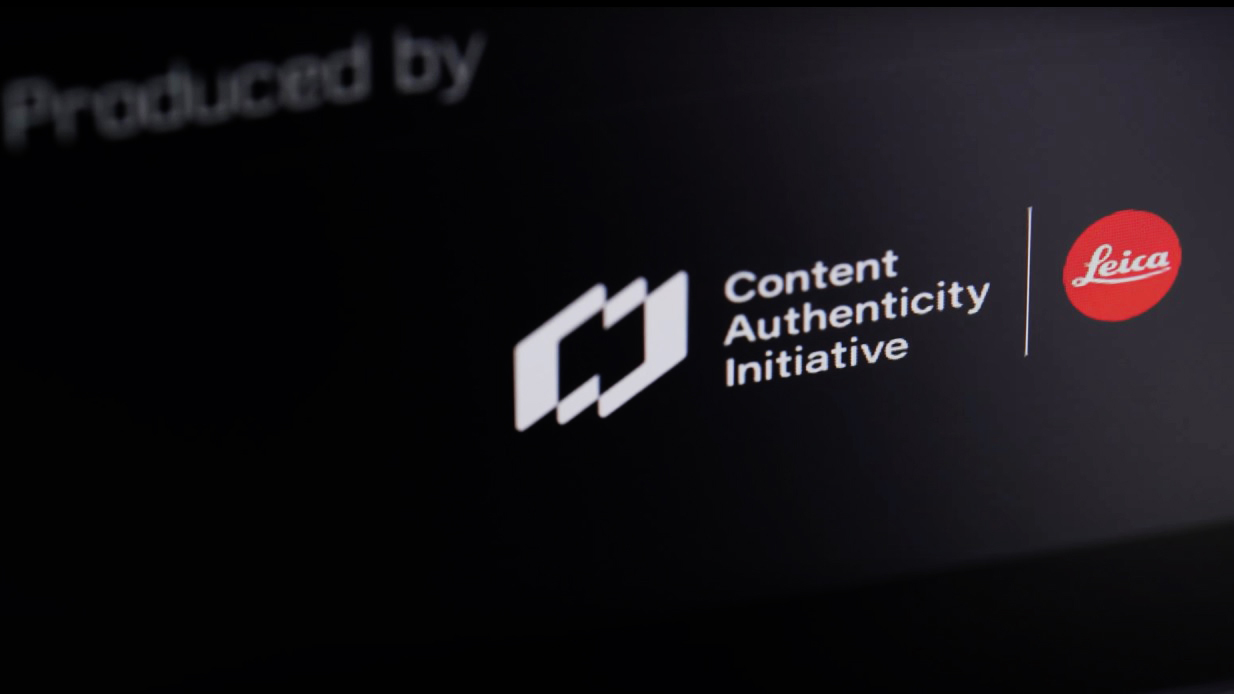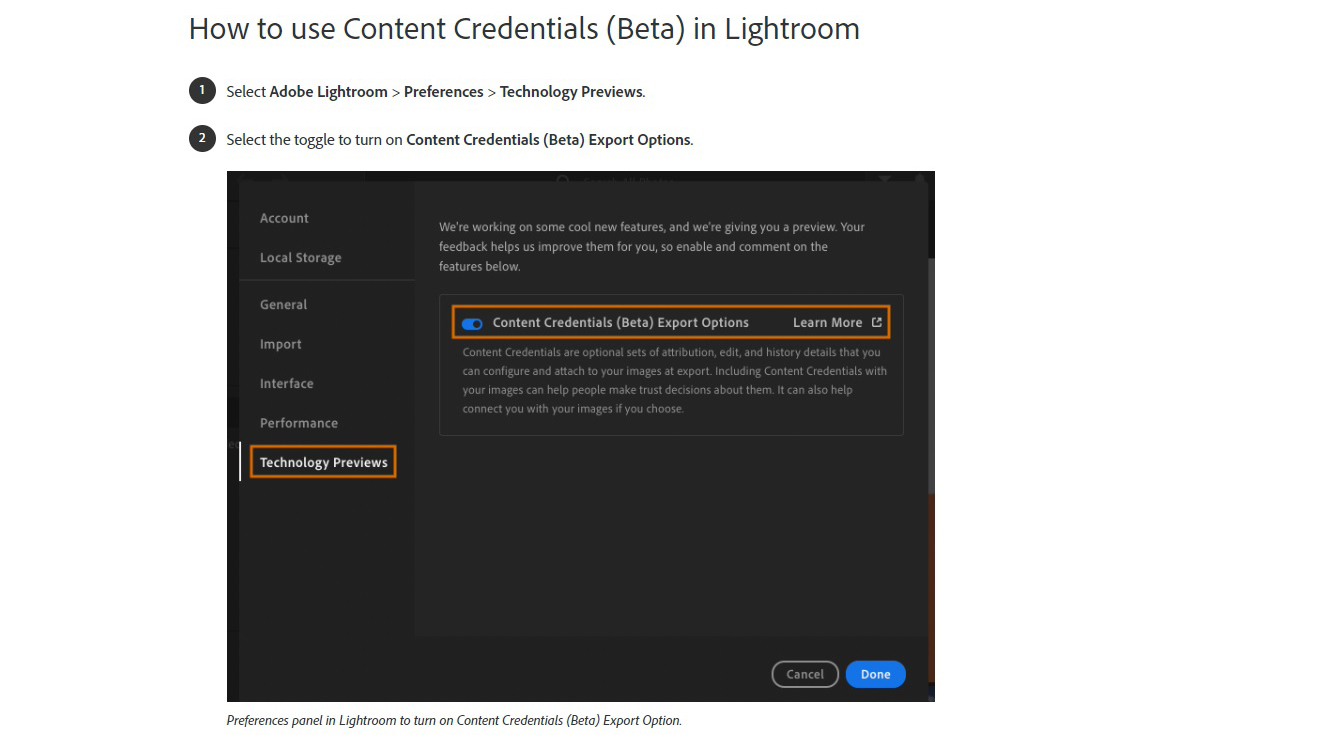What are Content Credentials and can they save photography?
Are you sure that image is real? Now you will know, with Content Credentials

Photography has always been about capturing the moment in front of you and sharing it with the world, or capturing a moment in time for historic significance. But since the rise of artificial intelligence, knowing where an image was taken, if it really was taken, and if it's a total fake has become an increasingly noteworthy subject.
Content Credentials were developed by the Coalition for Content Provenance and Authenticity (C2PA) – which is a cross-industry organization co-founded by Adobe. It is here to change the playing field and help photographers "certify" their work for genuine authenticity – either from the moment they press the shutter button on their new Leica M11-P, or as soon as it hits the news desk with a few clicks in either Lightroom or Photoshop.
Sounds great, but what is it and how does it work?
What is Content Credentials?
Let's address the elephant in the room: Content Credentials is not an automatic way to detect AI-generated images. What it does is create a system or a "manifest" to prove that an image captured is the genuine article – even showing editorial changes, such as a modification of tonality from warm to cool or even cropping from the whole image.
Think of it as a digital EXIF suitcase that always travels with your image. It records what camera model you used to take the image, what your camera settings were when you took the image, and even the time at which the image was taken. All this in a digital age provides authority and authenticity to a photographer's work.
At the core of Content Credentials is Cryptographic Provenance. In plain English this means you are providing your audience with a read-only encrypted history, giving insight to your image from the moment you take the picture, the second it lands in editing software, to the moment it is exported.
This history won't be available for modification, but it can be viewed when inspecting an image with the Adobe CR logo or manually verifying an image on the Content Credentials website.
The best camera deals, reviews, product advice, and unmissable photography news, direct to your inbox!
Is Content Credentials already in cameras?
The first camera to launch commercially with Content Credentials was the just-announced Leica M11-P.
Here the feature is known as Leica Content Credentials and can be accessed from the menu. It is easy to input and update the copyright details that will be assigned to each image you take with the camera – which is equipped with an encryption chip to produce a manifest for each image.
Are Content Credentials available now?
For now, aside from the Leica M11-P, the Content Credentials use case is rather limited when it comes to cameras, but we can only guess that Content Credentials will be working with other manufacturers to get this technology and software featured in other commercial cameras. Nikon, for example, is featured on the Content Credentials website and has said it will implement it in the Nikon Z9 at some point in the future.
While it is currently only alive in one Leica camera at present, Content Credentials are available to us all right now. It is open source, and any photographer can use it manually within Photoshop and Lightroom by clicking on Preferences > Technology > Previews and then turning on Content Credentials (Beta) Export Options.
This will then enable you to put your own details into your images, so you can start building authority around your work.
Who is Content Credentials for?
My personal background is in the sports industry, and as an old professional sports photographer I can see Content Credentials being a great way to quickly and efficiently "stamp" your work from the sidelines before it hits the news agency FTP. Better still, this could even be used by picture editors to quickly and efficiently choose images to go by wire and out into the public domain. This can also be used when covering major news events, too.
I can also see this being used by film photographers after scanning their work to give it better provenance. While you would still have to manually input the data yourself, it could be the new way to prove it was a film photo and not a digital image made to look like film.
As for users of the Leica M11-P, I'm also a Leica user and can see this feature being of use for those in warzones, reportage, and conservation situations when you really need to verify that the images taken are from boots on the ground and not from a computer miles away. While it can also be used for anything else, if you put your mind to it, I see those main areas being of use to those that use the Leica rangefinder system.
Whether you're on the fence about the whole thing, or think this is going to be the future of protecting images online, you have to admit that it's a very drastic step in proving your images are what they claim to be in a world full of deepfake nonsense.
However, if or when this new tech becomes more accessible to the masses, I can see it being a setup-and-forget process when you get any new camera – like making sure your camera is set to the right timezone, and so on. How important this step will become, only the future can answer.
These are the best Leica cameras right now, along with the best Leica M lenses and best Leica SL lenses.

For nearly two decades Sebastian's work has been published internationally. Originally specializing in Equestrianism, his visuals have been used by the leading names in the equestrian industry such as The Fédération Equestre Internationale (FEI), The Jockey Club, Horse & Hound, and many more for various advertising campaigns, books, and pre/post-event highlights.
He is a Fellow of the Royal Society of Arts, holds a Foundation Degree in Equitation Science, and holds a Master of Arts in Publishing. He is a member of Nikon NPS and has been a Nikon user since his film days using a Nikon F5. He saw the digital transition with Nikon's D series cameras and is still, to this day, the youngest member to be elected into BEWA, the British Equestrian Writers' Association.
He is familiar with and shows great interest in 35mm, medium, and large-format photography, using products by Leica, Phase One, Hasselblad, Alpa, and Sinar. Sebastian has also used many cinema cameras from Sony, RED, ARRI, and everything in between. He now spends his spare time using his trusted Leica M-E or Leica M2, shooting Street/Documentary photography as he sees it, usually in Black and White.





